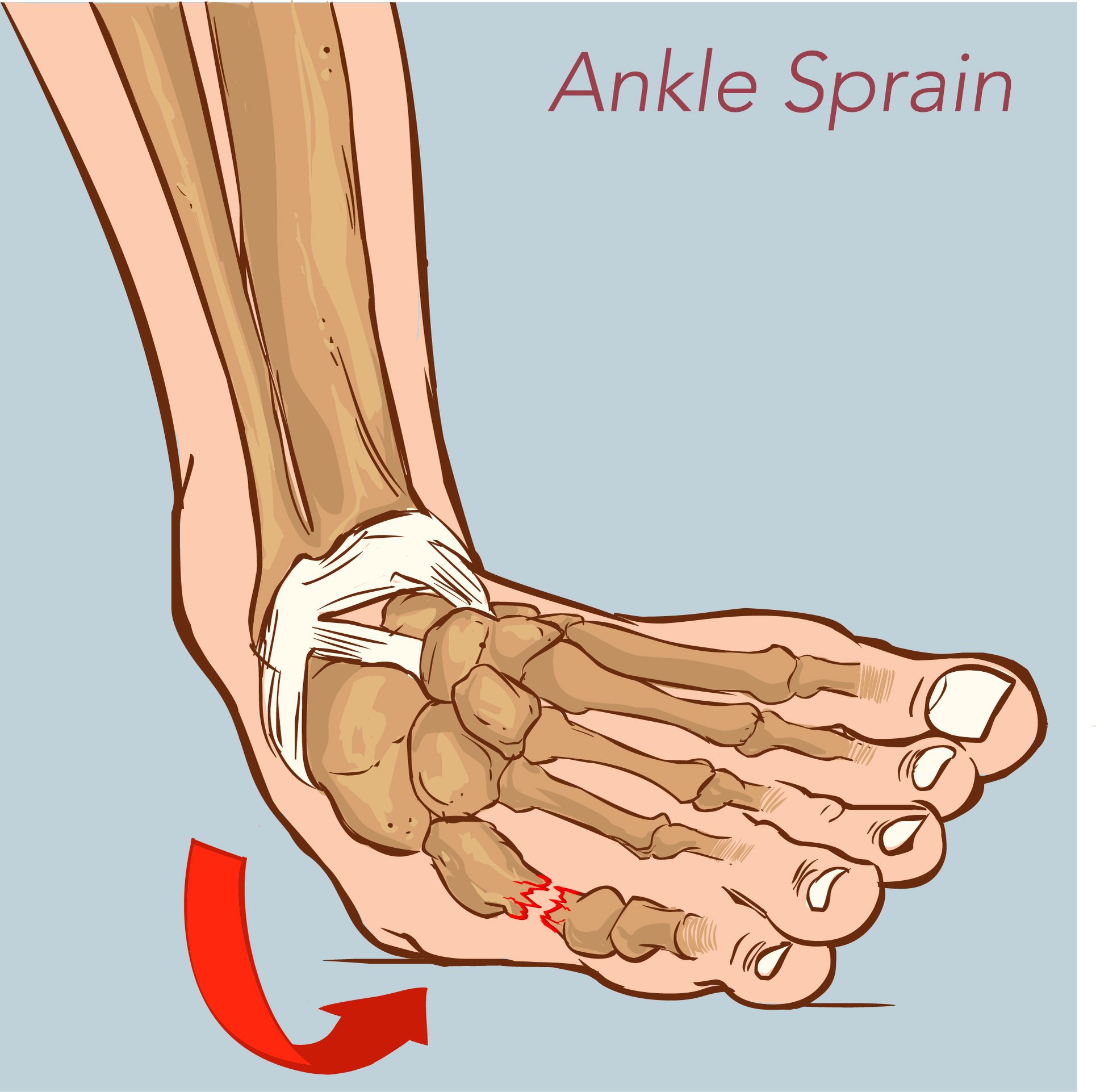An ankle sprain occurs when your foot rolls to the inside or outside when stepping. In most cases, the ankle will roll to the outside/foot rolls in causing what is called an inversion sprain. In this case the muscles and ligaments on the outside of the ankle get stretched or even torn. On the flip side, when the foot rolls out and ankle rolls in it is caused an eversion sprain where the structures on the inside of the ankle get injured.
When you roll or sprain your ankle, the ligaments and muscles get stretched out or even torn from this abnormal movement. You will likely experience the following symptoms with this type of injury
It is important to treat these immediate symptoms with the PRICE method to help your body heal quickly.

In addition to the treatments above, you may want to use an oral, over-the-counter anti-inflammatory for both pain relief and to help decrease the swelling in the area. Consult your physician or a pharmacist for appropriate medication.
Depending on the severity of the ankle sprain the symptoms may stay up to 1-2 weeks but should get better over time. If your symptoms are not improving it is important to seek medical attention from a physician to make sure there are not any other structures in the ankle that have been damaged. An X-ray might be necessary to make sure you have not fractured any of the bones in the ankle and lower leg.
After the initial healing of the injury, it is important to start regaining your ROM, flexibility, and strength. Below are a few exercises to help with these limitations.
Before you get back to your normal activities or even sports, it is important to make sure you have strengthened your ankle to avoid any further injuries!